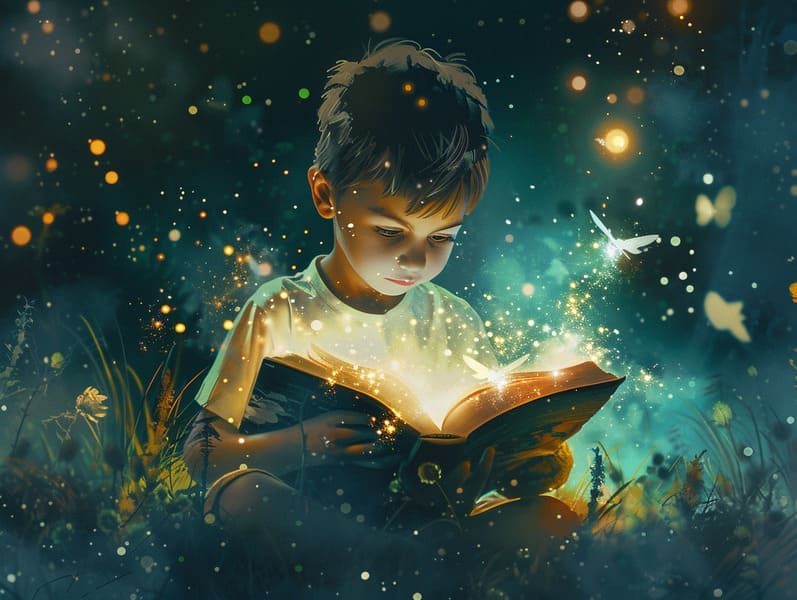Tracing the Heritage of Fairy Tales to Read and the Consistent Loveliness.
Tracing the Heritage of Fairy Tales to Read and the Consistent Loveliness.
Blog Article

Popular fairy tales have long histories. These tales have been recounted from one generation to the next far before they were ever recorded. They were born from a variety of backgrounds, including American traditions. They were initially told among older generations, often carrying themes and messages relevant to the societal norms and beliefs of the time.
Jacob and Wilhelm Grimm, the two Grimm brothers, were among the first to compile and release many of these beloved stories. Their volume, "Grimm's Fairy Stories," included classics like "The Story of Cinderella," "Hansel and Grethel," and "The True Story of Snow White," which have since become essentials in the world of timeless fairy tales. Similarly, H. C. Andersen's magical fairy tales, such as "The Little Mermaid," and "The Little Duckling," have enchanted hearts worldwide, establishing their place in the pantheon of classic fairy tales.
Despite their age, these tales remain as pertinent as ever, especially as bedtime stories for kids. These enchanting tales are now available in numerous formats, including colorful picture books, charming animations, and digital storybooks.
Their lasting presence can be connected to several whimsical characteristics:
Important Morals: Ancient fairy tales often offer important moral lessons. Stories like "The Story of the Boy Who Cried Wolf" teach the merit of truth, while "The Race of the Tortoise and the Hare" demonstrate the values of perseverance and humility. These tales offer the young clear distinctions between right and wrong, building their moral compass in a gentle yet significant way.
Empathy and Awareness: Fairy tales frequently depict beings facing tests and troubles, encouraging listeners to connect with their struggles and back their triumphs. For instance, "The Story of Beauty and the Beast" teaches us the necessity of seeing beyond looks to understand the true being of a soul, building compassion and understanding.
Cultural Awareness: Many old fairy tales are rich in the cultural contexts from which they were born. Exploring these tales can provide illuminating insights into different customs, strengthening a sense of world insight and knowledge.
Fantasy and Innovation: The enchanted elements in ancient fairy tales—talking animals—trigger children’s fantasy worlds. These fairy tales lead readers to fantastical realms, unleashing inventive thinking and a sense of magic that remains a lifetime.
Classic fairy tales are not only alluring but also informative. They work as delightful tools in strengthening various cognitive and affective skills this site in kids. When classic fairy tales are told out loud, they strengthen linguistic abilities by introducing new word meanings and complex sentence structures. This practice also promotes listening skills and attention span, as little ones concentrate deeply, prepared to see what happens next.
Furthermore, reflecting on the themes and characters of timeless fairy tales can nurture cognitive skills and evaluative skills. Young ones learn to detect patterns, foresee events, and understand cause and effect. These analyses also boost the young voice their thoughts and feelings, advancing their emotional intelligence.
In today’s electronic age, the presence of digital storybooks has made these narratives more available than ever. Websites and programs make available ample collections of popular fairy tales that can be perused or played anytime, anywhere. Fairy tales spoken are particularly well-received, providing an captivating way for the young to engage with these mesmerizing stories. Spoken stories and read-aloud videos lead characters and settings to life, often augmented by magical sound effects and music that enrich the narrative adventure.
The timeless appeal of old fairy tales lies in their ability to alter to modern days while keeping their key morals. Contemporary revisions of these fairy tales often feature more varied characters and modern settings, making them relevant to today’s audience. However, the underlying themes of valor, generosity, and even-handedness remain unchanged, continuing to strike a chord with readers of all ages.
Fairy tales also offer a sense of peace and predictability. They provide a well-ordered narrative with a evident beginning, middle, and end, often closing with the resolution of conflicts and the triumph of virtue over corruption. This steadiness can be encouraging for kids, granting a sense of reliability in an fluctuating world.
Ancient fairy tales continue to bewitch and train new generations, maintaining their appeal and relevance in modern society. As children's bedtime stories, they disclose a perfect blend of allure and teaching, nurturing moral values, empathy, and creativity. The existence of online storybooks and the commonness of fairy tales narrated ratify that these traditional fairy tales remain acquirable to new generations.
By continuing and broadcasting these fairy tales, we continue to recognize the rich tapestry of lore and cultural heritage. Whether you are browsing a colorful picture book, discovering a virtual collection, or playing an read-aloud story, the attraction of timeless fairy tales is always within reach. These narratives remind us of the timeless magic of fairy tales and its ability to gather us across time and space.
Be it you are exploring a vividly illustrated book, delving into a digital library, or listening to an sound book, the attraction of children's fairy tales is always within reach.
These narratives reveal of the unfading spell of tales and its ability to tie us across time and space, forming a connection that fascinates and enlightens alike.